Menu
Download the accompanying materials to this lesson plan - sign up here
Resources and materials for ESL Kids teachers
Time expressions are used to describe how frequently we do certain activities. They are often used in response to the question “How often do you …?”
Here are some commonly used time expressions:
Time expressions take the following forms:
This lesson will help your students to talk about their lives in terms of frequency. The lesson will cover time related vocab and action verbs, so make sure your students have already completed the dates (ordinal numbers), days of the week, months of the year and basic actions vocab.
See our "Warm Up & Wrap Up" page.
1. Review vocab: "Calendar fun"
Your students will be talking about how often they do things using the words "a week", "a month" and "a year". They will have already covered these words in previous lessons so this is a fun review activity.
You'll need a few calendars - depending on how many you can get your hands on, give out one calendar to each pair or group.
To elicit the key vocab, start off by writing on the board:
Today ...
Put students in pairs/groups to talk about their answers (using their calendars).
After a couple of minutes, hold up a calendar and ask "What's this?". Elicit "Calendar".
Then say "Let's use the calendar to find the answers". Then, holding up the calendar show / elicit the answers and complete the blanks on the board.
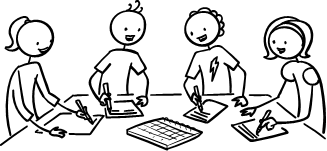
Next, write the following questions on the board and have your students work in their groups with their calendars to find the answers:
2. Play "Week / Month / Dates Buzz"
This is a fun game to practice saying the days of the week, months of the year and dates (ordinal numbers) in sequence.
Get everybody standing in a circle. You need one ball. Start by passing the ball around the circle with students counting numbers as pass the ball (1 .. 2 .. 3 .. 4 .. etc.).
Next, introduce the game "Buzz". When students pass the ball, every 5th number the person holding the ball must say "Buzz" instead of the number, for example:
1 ... 2 ... 3 ... 4 ... BUZZ ... 6 ... 7 ... 8 ... 9 ... BUZZ ... 11 .. 12 ... 13 ... 14 ... BUZZ ... 16 ... etc.
Start the game - the ball is passed from student to student around the circle with each person counting the numbers as they pass the ball ... and saying "Buzz" every 5th number. If anyone makes a mistake the game has to start from 1 again. Try and get the pace going really fast.
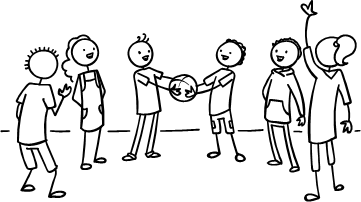
After a few rounds change to days of the week instead of numbers, again, saying the word "Buzz" every 5th day:
Monday ... Tuesday ... Wednesday ... Thursday ... BUZZ ... Saturday ... Sunday ... Monday ... Tuesday ... BUZZ ... Thursday ... etc.
After a few fun rounds change to months of the year and finally dates (ordinal numbers):
January ... February ... March ... April ... BUZZ ... June ... July ... August ... September ... BUZZ ... November ... December ... January ... February ... BUZZ ... April ... etc.
1st ... 2nd ... 3rd ... 4th ... BUZZ ... 6th ... 7th ... 8th ... 9th ... BUZZ ... 11th ... etc.
3. Introduce the structure "How often do you?"
Before class, find a picture of a famous character or person (cut out from a magazine or print out from the Internet - I use Bart Simpson).
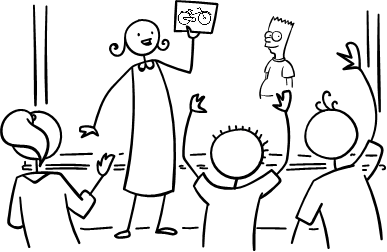 On the right-side of the board write:
On the right-side of the board write: Board layout:
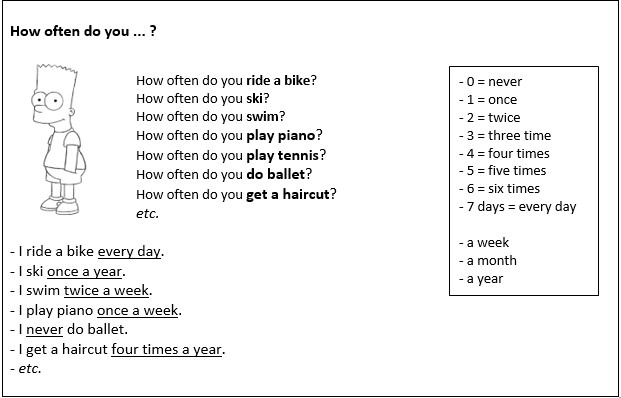
Students can make up any answers they don't know (e.g. how often Bart has his hair cut) - any logical answer is fine.
As you elect the answers, be sure to point out the word order:
4. Practice the structure "How often do you?"
We'll do this in three steps:
STEP 1: Controlled speaking practice
Put students in pairs - Student A asks the questions on the board and Student B is the character on the board. Make sure that all Student Bs speak in the character's voice!
A reads the questions to B and B answers using the sentences on the board. For example:
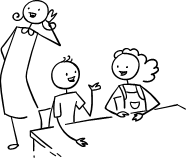 Student A: How often do you ride a bike, Bart?
Student A: How often do you ride a bike, Bart?
Student B: I ride a bike every day.
After all of the questions have been asked and answered students swap roles and practice again.
During this activity the teacher should monitor carefully and help with mistakes and pronunciation. At the end, ask a few of pairs to stand up and demonstrate a question and answer to the class - give lots of praise and a round of applause!
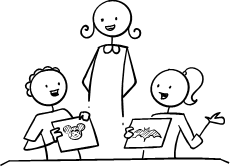 STEP 2: Roll play practice
STEP 2: Roll play practice
Before class prepare more character pictures (cartoon characters, superheroes, film stars, TV stars, pop stars, etc.). Make sure you have enough pictures for each pair. Give our one picture per pair. Pairs then practice the questions on the board and giving their own ideas for answers.
After all of the questions have been asked and answered students swap roles and practice again. When finished, you can have pairs exchange pictures and do again with another character.
Again, the teacher should monitor carefully and help with mistakes and pronunciation. At the end, ask a few of pairs to stand up and demonstrate a question and answer to the class - give lots of praise and a round of applause!
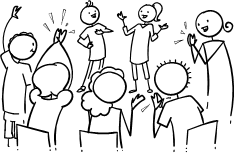 STEP 3: Interview practice
STEP 3: Interview practice
Finally, your students are going to give their own answers to the questions. In pairs, Student A asks the questions on the board to Student B, and student B will answer truthfully about themselves.
After all of the questions have been asked and answered students swap roles and practice again.
As before, the teacher should monitor carefully and help with mistakes and pronunciation. At the end, ask a few of pairs to stand up and demonstrate a question and answer to the class - give lots of praise and a round of applause!
 5. Do the "How often ...? (2) Week / Month / Year" worksheet
5. Do the "How often ...? (2) Week / Month / Year" worksheet
Give out the worksheets and circulate as your students write their answers..
6. Play "Three Truths and a Lie"
On the board write four sentences about yourself using the time frequency structures but make sure only 3 are true and one is a lie. E.g.
Tell your students one sentence is not true about yourself and ask everyone to guess which is the lie.
Then give everyone a slip of paper and have them write 4 sentences about themselves, again 3 truths and 1 lie. As they are writing walk around and give help with spelling, etc. Students don't need to use the same actions from the previous activity - they can write anything they like.
When everyone has finished, get everyone to stand up and find a partner. Tell everyone that they have just 1 minute to read their sentences and guess which is their partner's lie. Use a timer and shout "Go!". After 1 minutes get everyone has to stop and find a new partner, and continue like this for a good few rounds.
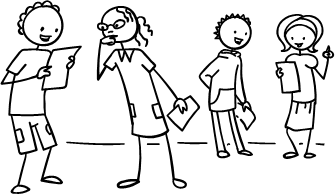
At the end, get everyone to sit down and then ask for some students to tell you some truths about other students.
1. Assign Homework: "How often ...? (4) Week / Month / Year" worksheet.
2. Wrap up the lesson with some ideas from our "Warm Up & Wrap Up" page.
 Found a mistake?
Found a mistake?
Please let us know
Full access to all resources on ESL KidStuff including lesson plans, flashcards, worksheets, craft sheets,
song downloads, classroom readers, flashcards app and songs app.